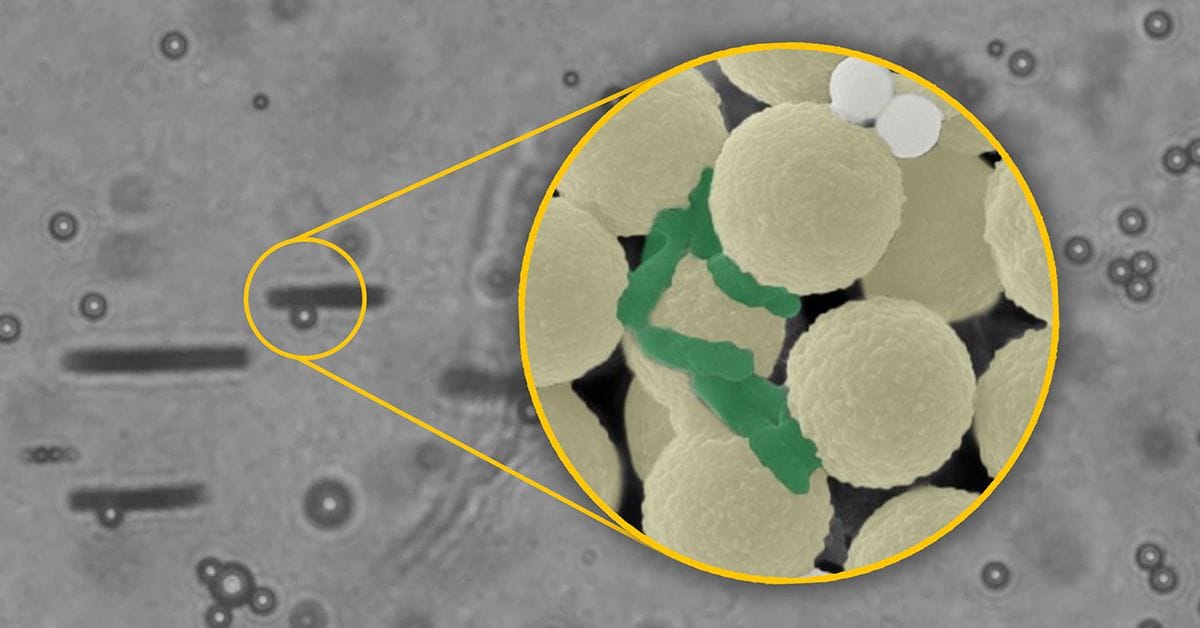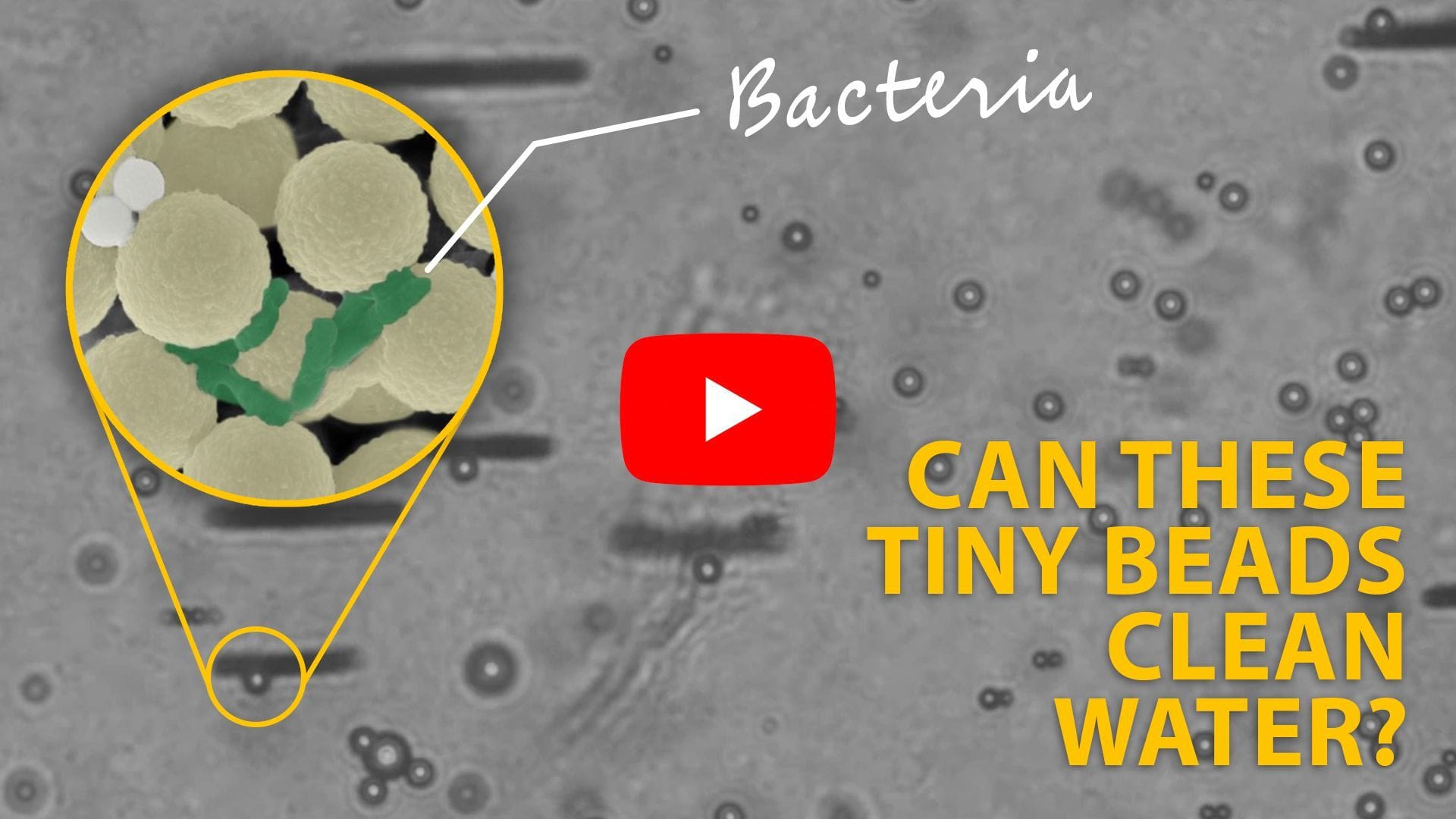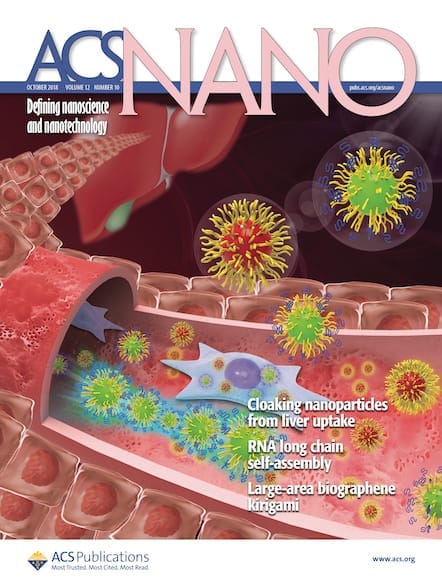Discover how swarming microrobots are revolutionizing water purification by capturing harmful microplastics and bacteria.

When it comes to cleaning up plastic waste from our oceans and waterways, the challenge is daunting. Microplastics—tiny fragments of plastic measuring less than 5 millimeters—are especially problematic. In addition to polluting the environment, these minuscule particles also attract bacteria, including harmful pathogens.
In a new study published in ACS Nano, researchers have developed a novel solution to tackle the issue: swarms of microrobots that can capture both microplastics and bacteria from water, making it cleaner and safer. Read on to learn more about these fascinating bots and their potential applications—and be sure to check out the Headline Science video of these tiny swarmers in action.
The Challenge: Microplastics and Bacteria
Microplastics come from various sources, including degraded food packaging and discarded toys. These tiny particles are ubiquitous in our waterways and pose significant ecological risks. Marine animals can ingest them, and through the food chain, they can eventually make their way to humans. While the health effects of microplastics are still being studied, their ability to attract bacteria, including those that cause diseases, adds another layer of concern. Removing both microplastics and bacteria from water has proven difficult, prompting researchers to seek innovative solutions.
Enter the Microrobots
The research team, led by Martin Pumera, designed microrobots capable of addressing this dual contamination issue. These tiny, spherical entities are about 2.8 micrometers in diameter, constructed by linking positively charged polymer strands to magnetic microparticles. When exposed to a rotating magnetic field, these microrobots self-assemble into swarming planes that can move as a collective unit. This movement is key to their ability to capture contaminants.
In laboratory experiments, the researchers simulated a contaminated water environment by adding fluorescent polystyrene beads (representing microplastics) and P. aeruginosa bacteria to a water tank. Then, they introduced the microrobots and activated a rotating magnetic field. Over the course of 30 minutes, the microrobots swarmed and captured about 80% of the bacteria and a significant amount of the microplastics. Afterward, the researchers collected the microrobots with a permanent magnet, detached the bacteria using ultrasound, and then disinfected them with UV light. Remarkably, the microrobots could be reused, still effective in capturing contaminants (although in slightly reduced amounts).
Future Applications
By mimicking the collective behaviors seen in nature, such as schools of fish, these microrobots offer a dynamic and efficient method for cleaning up contaminated water. The researchers suggest that these microrobotic systems could be adapted for larger-scale applications, potentially providing a sustainable solution for water purification. The ability to recycle and reuse the microrobots further enhances their appeal, making them a promising tool in the fight against water pollution.
Take A Closer Look
To learn more about this groundbreaking research, you can access the full open access article in ACS Nano here. This paper is freely available to read and download, allowing anyone anywhere in the world to explore the detailed findings and implications of this study.
Additionally, watch this captivating Headline Science video of the microrobots in action, prepared by the ACS Science Communications Team:
For more video content highlighting newsworthy research published in ACS journals, visit the Headline Science YouTube page.
Explore Related Research Articles from ACS Journals
On-the-Fly Monitoring of the Capture and Removal of Nanoplastics with Nanorobots
Dean I. Velikov, Anna Jancik-Prochazkova, and Martin Pumera*
DOI: 10.1021/acsnanoscienceau.4c00002
Synthetic DNA-based Swimmers Driven by Enzyme Catalysis
Tania Patiño Padial*, Erica Del Grosso, Serena Gentile, Lorena Baranda Pellejero, Rafael Mestre, Lars J. M. M. Paffen, Samuel Sánchez, and Francesco Ricci*
DOI: 10.1021/jacs.4c02094
Drinking Boiled Tap Water Reduces Human Intake of Nanoplastics and Microplastics
Zimin Yu, Jia-Jia Wang, Liang-Ying Liu, Zhanjun Li*, and Eddy Y. Zeng*
DOI: 10.1021/acs.estlett.4c00081
Quantum Material-Based Self-Propelled Microrobots for the Optical “On-the-Fly” Monitoring of DNA
Jyoti, Jose Muñoz, and Martin Pumera*
DOI: 10.1021/acsami.3c09920

